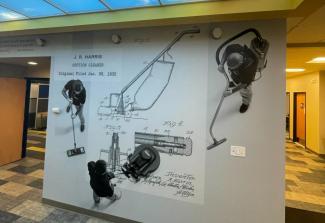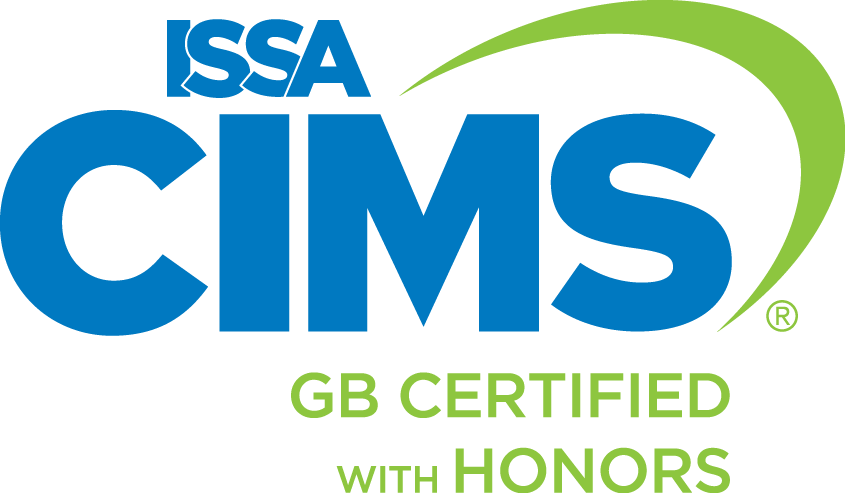The History of the Vacuum Part 2: Improvements Made by a Harris
In our last blog, we discussed the general history that led to the modern-day vacuum. While there are some specific people that we can attribute the invention to, it’s important to acknowledge that many inventors were working on the vacuum at once. Similarly, many inventors and engineers today continue to make improvements.
At Janitronics, we have a fondness for anyone with the last name Harris. Being family-owned and operated by Harris’ for fifty years, we know they’ve played important roles in the world of cleaning.
There have also been some notable Harris’ in the history of the vacuum. While all Harris’ are not related to each other (the US Census says it was the 25th most common last name in 2010), we still celebrate their contributions to the vacuum.

John N. Harris and US Patent No. 9,500,593: Leak Detection in Vacuums
Many vacuum models today use a vacuum bag to capture and remove dust. They operate in a similar manner to Spangler’s pillowcase; the vacuum sucks in both dust and air, and the dust is trapped in the bag while the air escapes.
Therefore, you can imagine the problems that would arise if there was a leak in the vacuum bag. And unlike a bag leaking water, finding out that a bag is leaking air and dust is quite hard. In many cases, people don’t discover the vacuum bag leak for a long time.
John N. Harris, Finley Miller, and Michael R. Swift from The Boeing Company patented their solution in 2016: color changing ink built into the bag. Utilizing a method from the food industry, they added an oxidizing ink to the bag. In a normal setting, the ink is part of the bag and remains unexposed to air. If a leak occurs, the part with ink is suddenly exposed to air via the leaking spot, and therefore changes color. This allows for a quick, easy identification of a leaking vacuum bag.
Read more from the original patent here.
Norman K. Harris and US Patent 5,781,962: Carpet Cleaning Machine with Maintenance-Reducing Features
To understand the contribution Norman K Harris and his colleagues made, we first have to talk about cyclone vacuums.
In the 1980s, James Dyson invented the “cyclone vacuum.” Instead of relying on vacuum bags or filters alone, a cyclone vacuum spins the air in a spiral like a cyclone. Through a combination centrifugal force, centripetal force, weight, and air pressure, dust particles trapped in the cyclone are forced down into a containment chamber while clean air escapes. (For an overly simplified explanation, think of classical tilt-and-whirl rides in amusement parks. The force from spinning keeps riders stuck to the side of the ride. If the ride were shaped like a cyclone, riders would be spun and pushed down to the bottom.)
Cyclone vacuums are not perfect, as the “cyclone” cannot catch everything. Dust and particles under a certain size can escape these forces and end up with the expelled air. Often, these types of vacuums use filters to compensate for what the cyclone can’t catch. And, like any other type of filter, these filters can get clogged with dust after some time or in the wrong conditions. It takes time to either clean or replace them.
Norman K. Harris, along with colleagues Paul E. Fiegel, David G. Jansson, and Mark A. Pleshek patented their solution to the problem in 1998. US Patent 5,781,962, assigned to Racine Industries, Inc., aims to reduce the frequency of clogging. It improves on the cyclone vacuum’s capabilities of catching and removing dust before it gets to the filters, thereby removing the dust from getting to the final filters and reducing the number of times the vacuum has to undergo maintenance.
The patent (and the invention itself) gets rather technical. For anyone interested, you can see the whole patent here.
(These four inventors, with a few other colleagues, were also credited on another patent filed less than two months before this one. US Patent 5,755,006 is for a base that helps transport their vacuum model. It can carry additional equipment, including “the machine-user’s lunch.”)
John R. Harris and US Patent 2,079,405: Suction Cleaner
For anyone who has visited the Janitronics officers in Albany, NY, this name may look familiar. The name and patent number, as well as some of the diagrams that are a part of this patent, are part of our wall mural.
So, what is this patent for?
First, you should know that when this patent was filed in 1935, many of the features we have today were completely unavailable. The convenience of the vacuum was that the vacuum even existed; at the time, vacuums were still luxury items few could afford. The common features of today were still in development back then.

One such issue without an easy solution was the height of the nozzle compared to the front wheels. (To clarify, the use of the word “nozzle” in both this patent and for this section refers to the front part of the vacuum.) This height difference determined the vacuum’s effectiveness on different surfaces. Too low, and vacuums would sink deeply into plush carpets and would get caught in the fibers. Too high, and the vacuum would be too high above shorter carpets to clean much.
Before John R. Harris’s patent, there were some technical ways to adjust the height of the nozzle. However, these methods required that the vacuum user kneel or sit on the floor to adjust the height. This required a lot of maneuvering and took up precious time.
There is an additional note made in this patent involving the handle. John R. Harris states that “pivoted handles” provide a much more useful and valuable experience than a “fixed handle.”
John R. Harris combined these two features and made improvements to create a working model. A knob at the handle would raise and lower the back wheels of the vacuum, changing the angle and therefore the height of the nozzle. This allowed for adjustments without having to put considerable time and effort into making them. And, as the inventor wanted, this model retained the pivot handle for the advantages it brought.
You can read the original patent here.
Continued Innovations
These additions were not the last improvements made to the vacuum. Even today, people are working on the next great steps for this marvelous cleaning invention.
We’re proud of the Harris’ who have left important impacts on cleaning. We continue our part of the legacy by doing what we do best: cleaning for health.
Reach out to the experts on cleaning through our contact page here.



